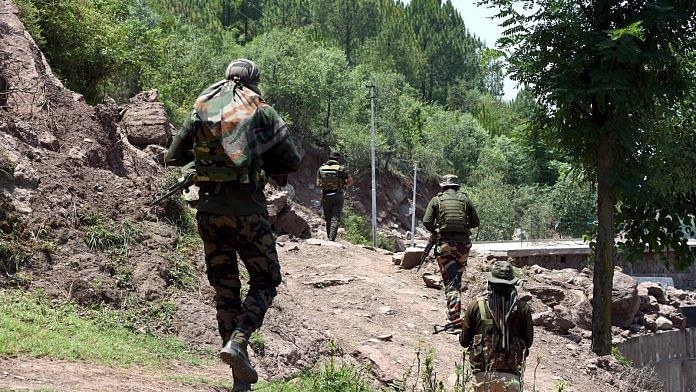New Delhi: The overall defence budget for 2021-22 was hiked, marginally, by around 1.4 per cent to Rs 4.78 lakh crore from Rs 4.71 lakh crore in 2020-21.
In episode 675 of ‘Cut the Clutter’, ThePrint’s Editor-in-Chief Shekhar Gupta addressed the “collective wish” for India to spend more on defence and why India spends too little of a percentage of its GDP on defence.
He briefly discussed the new defence budget in terms of last year’s estimates and revised figures. The revised capital expenditure of the defence services for 2020-21 was Rs 1,34,510 crore against the budgetary allocation of Rs 1,13,734 crore. “How did the revised estimate go so much higher than the budgeted estimate? That is because the Chinese came in, and lots of emergency purchases were made,” he explained.
Gupta mentioned that India’s highest defence spending, as a percentage of GDP, was in 1986-87 during Rajiv Gandhi’s tenure as prime minister when it stood at 4.23 per cent, and that too at a time India wasn’t facing a wartime scenario.
‘Guns versus butter’ debate
With regard to the “collective wish” to spend more on defence, Gupta said, “The counter to that is that India should also spend more on education, rural development, food subsidy and clean water. So, you get caught in the same old ‘guns versus butter’ debate or ‘missiles versus dal- bhat’ debate.”
Last year, defence accounted for 15.5 per cent of India’s budget whereas welfare spending like food subsidies accounted for 6.6 per cent, rural development was 4.3 per cent, health was 2.4 per cent and education was less than 2 per cent. “So when we say ‘give more money to defence’, we have to think about where that money will come from,” he added.
With regard to the rise in food subsidy by 48 per cent, he said, “The Modi government — and thank you for that — has taken a Ganga snan on our national finances. They’ve cleansed our national finances from some of our oldest sins.”
When the Centre gives food subsidy to the poor, it commits the money to the Food Corporation of India (FCI) and that money sits as a receivable on FCI’s books, explained Gupta who called it one of India’s “oldest sins”. However, this year, the government plans to pay all pending debts so that this part of the deficit does not remain hidden, he added.
While making sense of some elements in the budget with sizeable increases, Gupta said, “Some percentages may look very high, but the absolute may be low, which means the base is low.” He took the example of the Jal Jeevan Mission and the Ministry of Consumer Affairs, Food and Public Distribution.
Also read: Why Modi govt will be spending less on defence pensions next year
Defence pensions & ‘HR challenge’ of armed forces
Defence expenditure towards pensions for the next fiscal has been reduced by 13.4 per cent. This is mainly because last year, a larger allocation was made for pension arrears and since those have now been cleared, they don’t have to be paid this year, Gupta said.
He then explained why the Indian armed forces face “a big HR challenge” by first pointing out that in approximate figures, the Army gets 56 per cent of the entire defence budget, the Air Force gets 23 per cent, the Navy gets 15 per cent, and another 5-7 per cent goes to other heads like Defence Research and Development Organisation (DRDO). Yet, the Air Force is able to spend 59 per cent of its budget on its capital acquisitions, the Navy spends 54 per cent and the Army only 18 per cent. This is because the Army has much larger manpower and therefore, has to pay for salaries, and pensions, welfare housing etc., said Gupta.
Though the government is working on reforms, these need to be implemented faster to reduce manpower, as most modern armies in the world are doing, and pension costs need to be converted into salary costs by way of extending the tenure of some categories of service, Gupta said.
Watch the full episode here:
Also read: ‘Stark need for modernisation’ — why armed forces want a big jump in defence budget







In absolute terms, five trillion is a lot of money. At a time of pandemic, we have been reminded how inadequate the 1.2% of GDP spent on public healthcare is. It should be at least 2.5%. Military planners also need to factor in the sag in economic growth rates, which is tying the FM’s hands. The saving grace is the nuclear deterrent. As a lay person, one cannot visualise how a two front war with three nuclear armed states will play out.